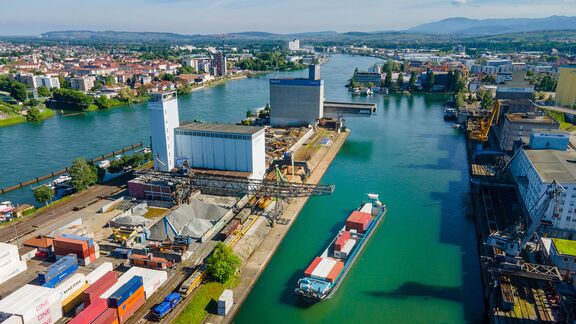Testing for digital sea and inland port networking has commenced
Reading time: 2 minutes
Platform operators Portbase and RheinPorts have launched a ground-breaking project in a joint initiative to digitally connect the maritime and inland port community. The aim is to optimise the flow of data between the seaports in the Netherlands and the inland ports on the Rhine. The Port of Rotterdam, duisport and Port of Switzerland are supporting this project as shareholders and act as ambassadors.

The combination of the Portbase Port Community System (PCS) and the RheinPorts RPIS (RiverPorts Planning and Information System) makes it possible to improve efficiency and transparency along the supply chains from the seaport to the hinterland.
Seamless exchange of data facilitates import and export process optimisation, improvements in planning and the simplification of the transfer of information to the stakeholders involved. This helps reduce complexity in data exchange along logistics chains, thus constituting an added value for carriers, terminals, ports and all partners involved. The launch of the test phase marks the first practical implementation of the 2022 memorandum of understanding between the ports.
In addition to the close cooperation between the ports and the platform operators, the logistics players along the supply chains also play a key role by connecting with the platforms, handling data exchange and creating added value with the services offered. Logistics company Danser Group is an important partner in the test phase and supports the first steps of the data exchange initiative. Based on the gained experience, further use-cases are to be developed.
The ultimate goal is to create a digital corridor. This facilitates hassle-free and secure data transmission, reduces complexity and increases efficiency for inland shipping and ports. Everyone involved stands to benefit – from import and export companies and terminal operators to carriers, port authorities and customs authorities.
This calls for the community’s active involvement and participation to achieve this. The initiative sets the clear goal of generating benefits as quickly as possible, which is why the test phase is scheduled to be completed by the end of 2024 so that the ramp-up phase can take place in 2025. The initiators want to successfully establish the digital corridor between inland and seaports together with the community and take a major step in shaping the future of port logistics.